British and American forces sunk a decommissioned US warship during a complex live-fire exercise off the Scottish coast involving various anti-ship weapons.
Ukraine ‘Starts Decimating’ Iranian Drones; 5 Suicide UAVs Including ‘Most Advanced’ Mohajer-6 Shot Down – Kiev
China Not Repeating Nazi Germany’s Mistake; USAF General Says ‘No Nation In Their Right Mind’ Would Want To Fight Beijing
The sinking exercise (SINKEX) was a part of the US-led Exercise Atlantic Thunder 22 that was held from September 1-12, with the main exercise — including the SINKEX — taking place on September 7, in waters off the northwest coast of Scotland.
The SINKEX involved the use of ex-USS Boone, a decommissioned Oliver Hazard Perry-class frigate, as a maritime target which was sunk to the bottom of the Atlantic Ocean by a combination of weapons fired by the British Royal Navy’s HMS Westminster and a Wildcat maritime helicopter, a Royal Air Force (RAF) Typhoon, US Air Force (USAF) F-15E Strike Eagle fighter jets, and a US Navy P-8 Poseidon patrol aircraft and the USS Arleigh Burke (DDG-51) guided missile destroyer.

This was the first time an RAF Typhoon fired live munitions onto a warship used as a maritime target.
A total of three Typhoons from the RAF’s No. 41 Squadron – the test and evaluation unit – stationed at RAF Coningsby, Lincolnshire, participated in the Atlantic Thunder 22, and as per specific reports, only one of these fired weapons onto the ex-USS Boone.
Platforms & Anti-Ship Weapons Used During SINKEX
The Typhoon fired an unspecified number of 500-pound Paveway IV dual-mode bombs guided toward the target by the Wildcat HMA2 helicopter from 815 Naval Air Squadron, using its MX-15HDi electro-optical/infrared sensor turret.
This was the first time a Royal Navy helicopter guided the Paveway IV onto its target.
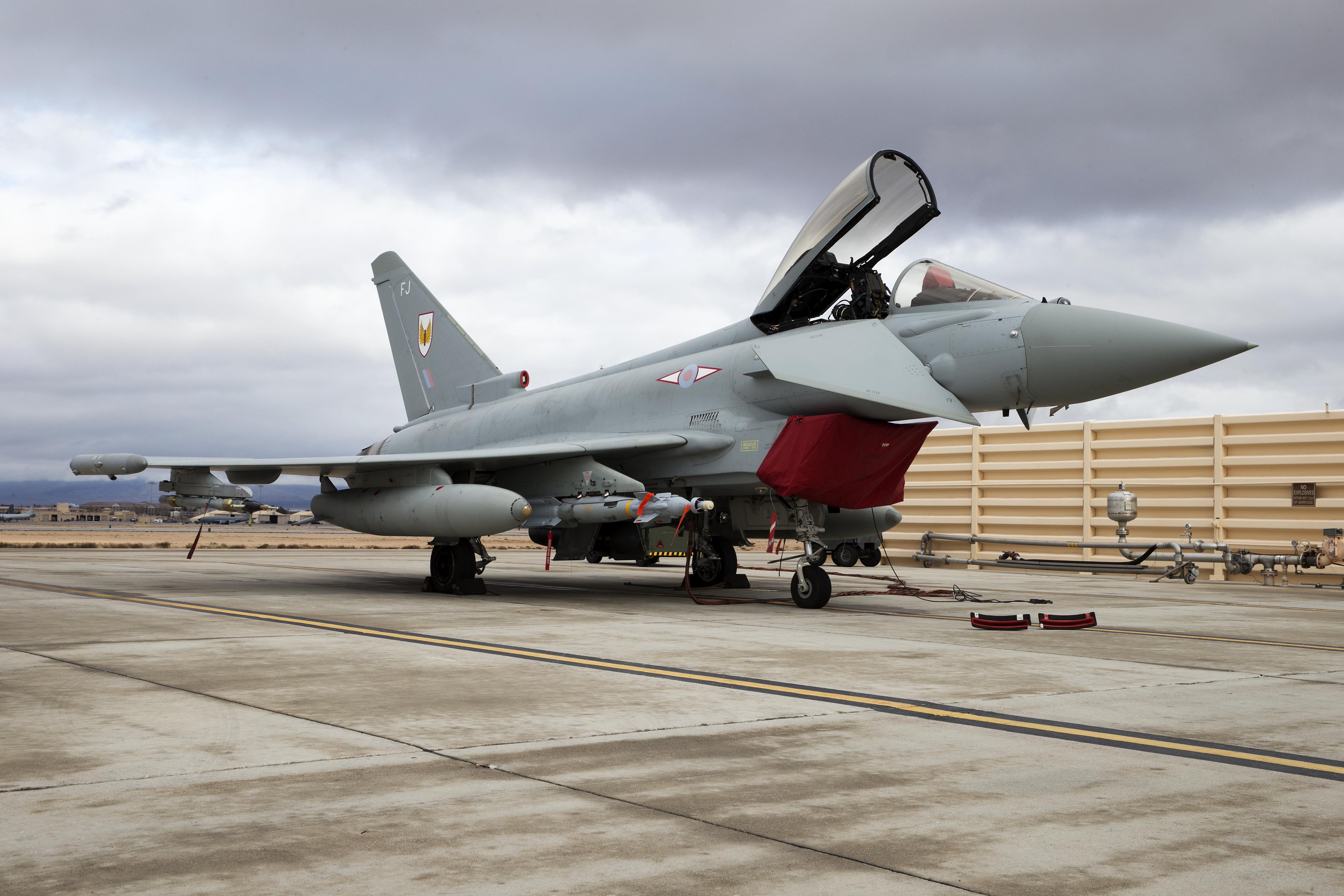
Earlier, the same Wildcat had already fired its own Martlet air-to-surface missiles, for the first time, onto a realistic target at sea. So far, Martlet has only been employed against purpose-built targets.
The missile is intended to be used against asymmetric targets such as small high-speed naval craft, ‘suicide drone’ boats, or other uncrewed surface vessels, including those operating in swarms. The missile can also be employed against certain aerial targets, mainly unmanned aerial vehicles (UAVs) and other maritime helicopters.
Each Wildcat HMA2 can carry up to 20 Martlets on the Leonardo Weapon Wing – a shelf-like stub wing with ten containerized rounds on each side of the helicopter.
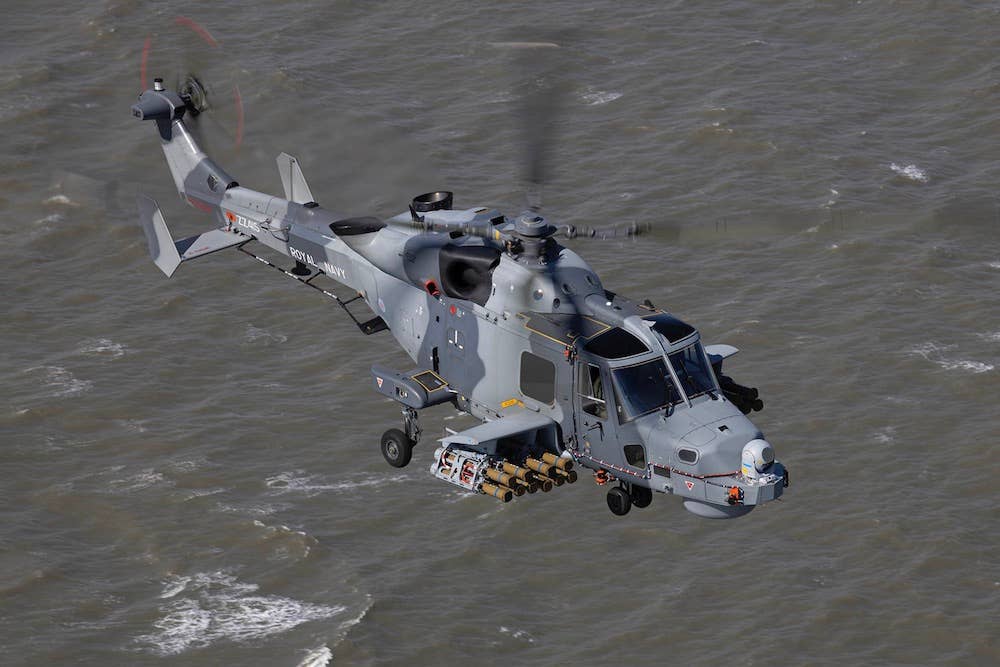
The missile can travel at a speed of Mach 1.5 – 1.5 times the speed of sound – and has a range exceeding 3.2 nautical miles (around 6 kilometers), which reports suggest could be potentially extended due to the launching from a moving helicopter.
The Wildcat can reportedly acquire targets at ranges of between four nautical miles and around 0.25 miles (about 7.4 – 0.43 kilometers)
Apart from the Martlet, three Harpoon anti-ship were also fired at the former US Navy frigate, two of which were fired from Type 23 frigate HMS Westminster and one from the P-8 Poseidon belonging to the US Navy’s Patrol Squadron 46 (VP-46).
China Conducts ‘Hypersonic Bombing’ As Scientists Evaluate Aircraft’s Ability To Fire Weapons At Mach 5+ Speed
Russia’s ‘Deadly’ Incendiary Munitions Pound Liberated Ukrainian Village; Drone Captures Terrifying Footage
The three missiles were fired simultaneously and reportedly detonated around 1,500 pounds (approximately 680 kilograms) of explosives within the frigate hull.
While the destroyer USS Arleigh Burke (DDG-51), the lead ship in its class, fired the multi-purpose SM-6 missile, which was also the first anti-ship SM-6 engagement in the US European Command (EUCOM) area of responsibility (AOR).
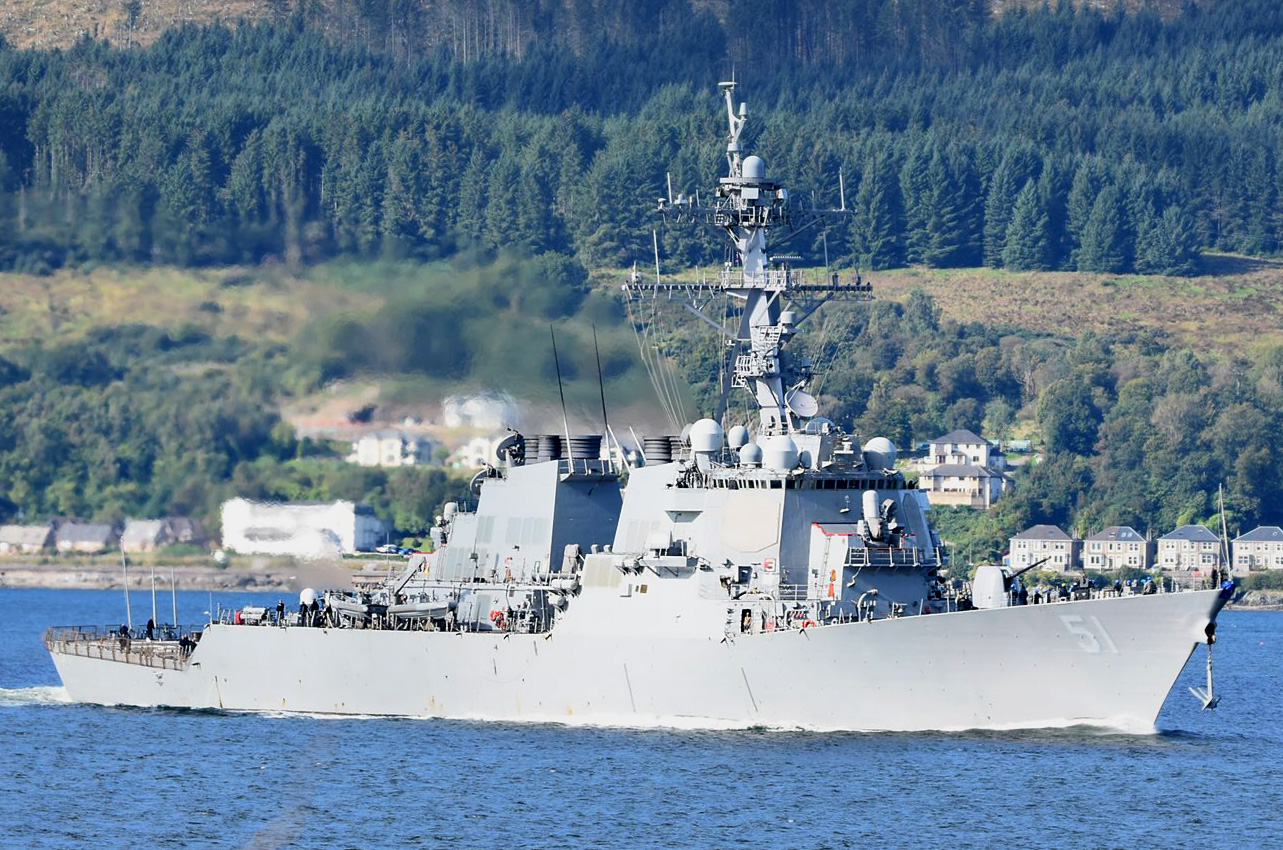
After the SM-6 strike, F-15s from the USAF’s 494th Fighter Squadron, based at RAF Lakenheath in England, fired several Joint Direct Attack Munitions (JDAMs).
Of late, there has been an increasing interest in using JDAMs against surface vessel targets, with the missile being modified for use as an anti-ship weapon as part of the USAF’s Quicksink program in collaboration with the US Navy.
While it remains unclear what type of JDAMs were used in Atlantic Thunder, the F-15s are known to have successfully test-fired the Quicksink-modified JDAM. During a test conducted in the Gulf of Mexico in April, an F-15E Strike Eagle released one modified GBU-31 JDAM and successfully destroyed a full-scale surface vessel.
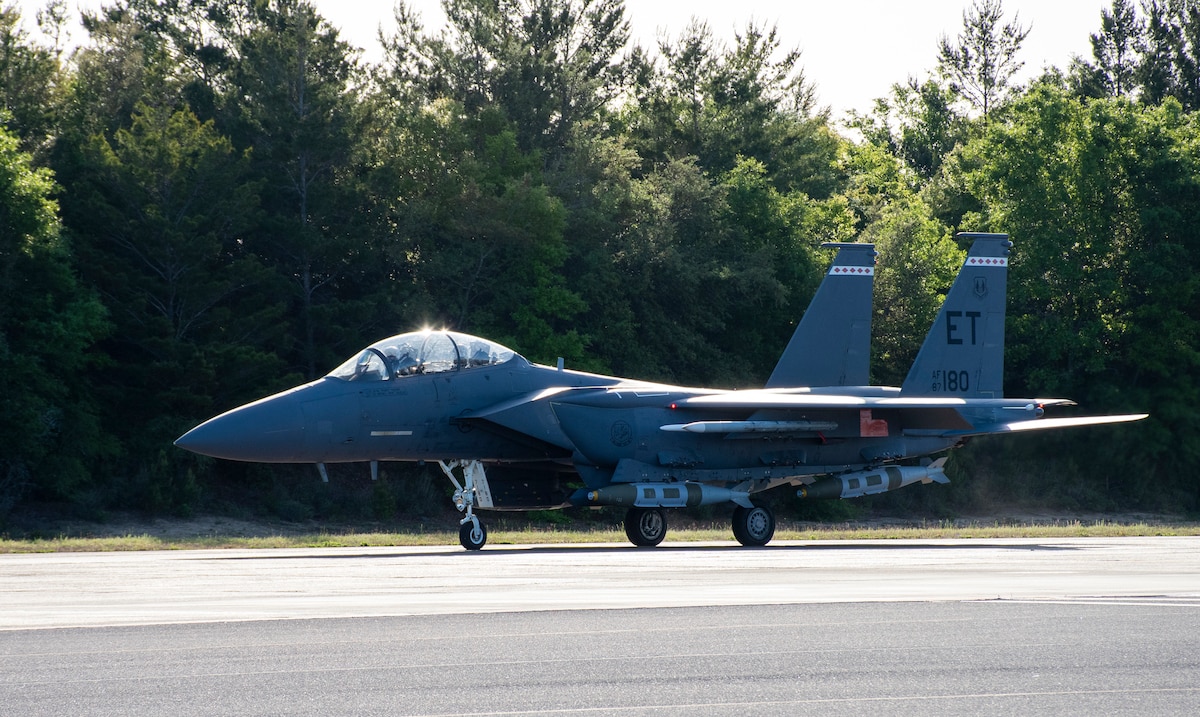
Also, aboard the USS Arleigh Burke, the 22nd Marine Expeditionary Unit marines deployed a V-BAT 128 vertical take-off and landing (VTOL) UAV, which provided vital imagery and battle damage assessment.
This was another first, as the V-BAT 128 had never been launched before from an Arleigh Burke-class guided-missile destroyer.
Atlantic Thunder: First Exercise Of Its Type For The British Royal Navy
According to a statement released by the British Royal Navy on September 23, the Atlantic Thunder was the first exercise of its type for the service in 18 years.
“Atlantic Thunder has demonstrated that UK and US naval and air forces can work together to deliver an end-to-end kill chain against a long-range maritime target,” said Commander Ed Moss-Ward, the Commanding Officer of HMS Westminster. “The integration of high-end weapons, sensors, and communications with our NATO allies is key to the collective warfighting capability of the Alliance demonstrated by the sinking exercise,” he added.
“The firings have supported the development of the Royal Navy’s targeting and weapon capabilities and afforded [an] opportunity to conduct realistic training to validate tactics and operating procedures,” Commander Moss-Ward added.
Lieutenant Ross Gallagher of 815 Naval Air Squadron, in command of Westminster’s Wildcat helicopter, said: “The exercise presented a great opportunity for the Wildcat to showcase the Martlet missile system and to Laser Target Designate for Typhoon dropping Paveway IV.”
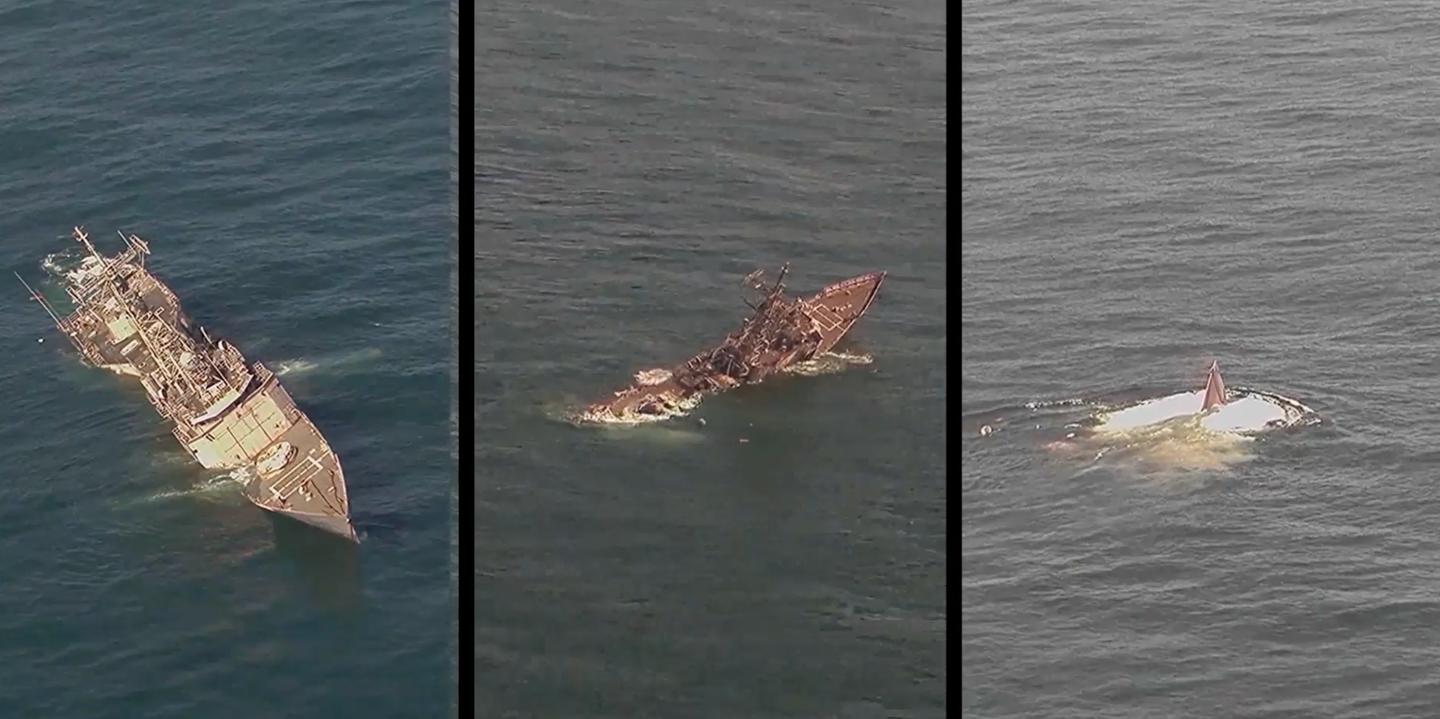
The ex-USS Boone, which was used as the target for the SINKEX, served in the US Navy between 1982 and 2012. It was the twentieth ship of the Oliver Hazard Perry class. It was named after Vice Admiral Joel Thompson Boone, a Medal of Honour recipient and the most-highly-decorated medical officer of World War I.
- Contact the author at tanmaykadam700@gmail.com
- Follow EurAsian Times on Google News




